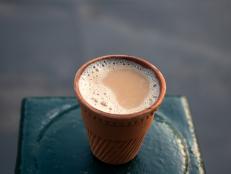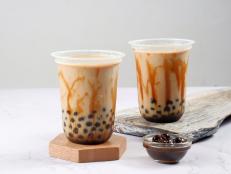Did You Know You Can Steep Tea Leaves Twice?
In fact, the best flavor often comes from later steeps.

owngarden/Getty
If everything you know about tea can be found written on a box of Lipton’s, it may be time to broaden your knowledge. Yes, tea is a convenient and inexpensive drink, but it’s also a custom that’s been around for millenia. As a medicinal beverage, it dates back as far as 2700 BC in China; as a daily drink, it’s been a part of Chinese culture since the third century. Now, tea is an international staple.
Frankly, you could fill a whole library with the history of tea and the traditions associated with it. Instead of attempting that, we’re here to talk about one particular custom that you may not know about: steeping tea leaves twice.
As it turns out, throwing tea leaves away after a single steep isn’t always how it’s meant to be done. Many types of leaves are actually meant to be steeped two times or more.

Linghe Zhao/Getty
Why steep tea leaves twice?
First, let’s get something straight: Tea is a category, not a single drink (just like vegetables are a category, not a single food). There are different types of tea leaves, and different ways of steeping, or brewing, these leaves depending on how the leaves were processed, the equipment you use, the flavor you want and more.
This being said, there are some types of tea that are actually made to be steeped more than once. “High quality Chinese teas are made to be brewed multiple times,” says Shunan Teng, owner and founder of Tea Drunk. “When the teamakers craft the tea, they often ‘layer’ the flavors through rolling, and that calls for ‘peeling off’ the flavors in brewing.”
During production, damp tea leaves are rolled to release some of the flavors, then coiled around themselves or made into other shapes. In the first steep, the leaves loosen and let off some flavor. But it’s not until the second steep, when the leaves have loosened, that the flavors start to deepen.
The first steep is often referred to as the awakening step.
Some tea aficionados refer to the first steep of high-quality tea leaves as the rinsing step, or the awakening step. “You are essentially waking up the tea leaves to get ready for the first real infusion,” says Ashley Lim, certified tea sommelier and the founder and CEO of Mansa Tea.
There are a few reasons why this awakening step is important, Lim says. First, tea experts find it easier to assess the quality of the tea leaves when they’re slightly wet, as opposed to when they’re dry and tightly shaped. Second, it allows the leaves to open up, ensuring a more even brew with flavors from all parts of the leaves. And finally, Lim says, it can rinse away any chemical residue or unwanted flavors.
The Gong Fu Cha ritual involves brewing large quantities of tea leaves in small quantities of water several times.
Gong Fu Cha (pronounced “Kung Fu Cha”) is a traditional Chinese brewing method. “Gong fu” translates as “time and effort,” Teng says, or “discipline and skill.” “Cha” simply means “tea.” To brew tea this way, most people use either a very small teapot, or a gaiwan, a small, lidded bowl. The teapot or gaiwan is filled up to halfway with tea leaves, then all the way with hot water. That first steep is poured off immediately, as it’s the awakening step. The next steep, which is the first one that yields drinkable tea, should last about 10-15 seconds. Subsequent steeps get a bit shorter each time. Typically, the tea leaves are steeped up to five times before they begin to lose flavor.
Any high-quality tea leaves can (and maybe should) be steeped more than once.
Although Gong Fu Cha is a Chinese custom, other cultures have similar traditions of stepping high-quality tea leaves more than once in a single pot or cup. “Any [high-quality] tea leaves should at least produce two steepings,” Teng says.
That said, it’s best not to steep most tea bags twice. Usually, tea bags are filled with tea dust, small particles of tea leaves that release flavor very quickly. “The flavor extraction is so fast on the first brew that it’s difficult to produce a second brew,” Teng says.
The bottom line: For high-quality tea leaves, steeping more than once is actually the proper method.
Because of the way tea leaves are processed — they’re dampened, then rolled and coiled tightly before they dry — the first steep awakens the leaves but doesn’t yield the best flavor. Next time you brew tea leaves, try using lots of leaves and adding small amounts of hot water for multiple steeps with an evolving flavor.
Related Content:





























































